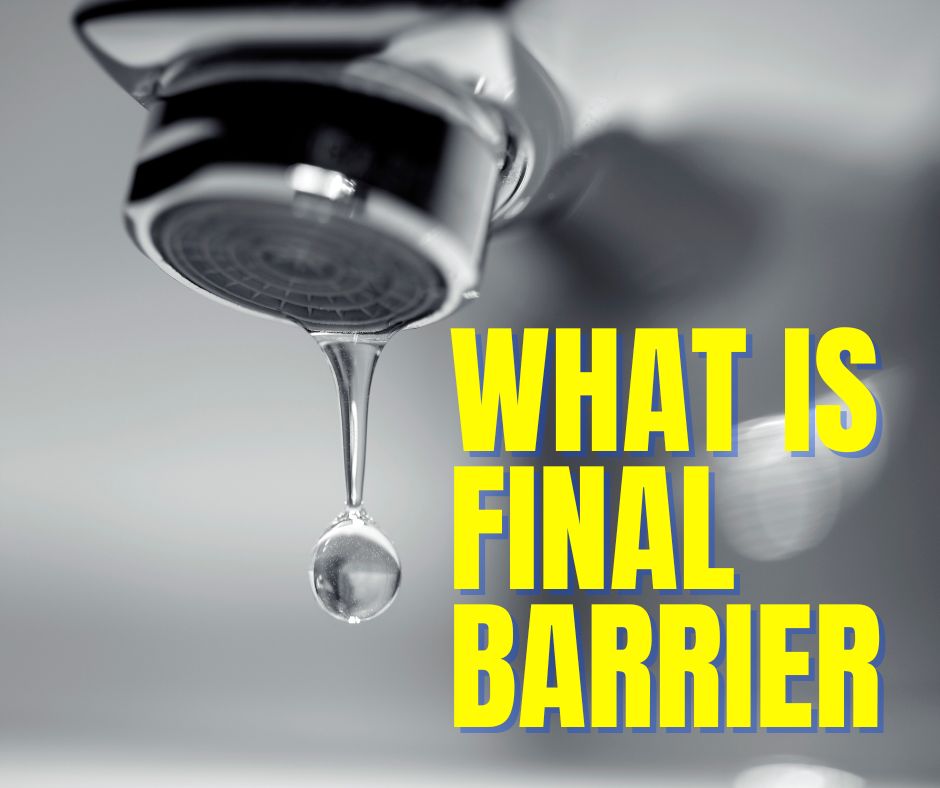Water is a fundamental part of our lives, but as it travels through municipal pipes to our homes, it can pick up contaminants that affect its quality. While central water treatment plants aim to meet federal safety standards, additional filtration at home can add a crucial layer of protection—referred to as the “Final Barrier.” This approach brings peace of mind, ensuring that the water your family consumes is not only safe but of the highest possible quality.
What is Final Barrier Filtration?
The “Final Barrier” concept refers to point-of-use (POU) technologies, which filter water right before you use it. This type of filtration adds a crucial safeguard, removing contaminants that may re-enter water after it leaves a municipal treatment plant. Final Barrier systems include under-the-sink filters, reverse osmosis (RO) units, and whole-house filtration systems, each offering unique benefits.
This step is especially valuable in today’s world, where new contaminants—such as disinfection byproducts, pharmaceuticals, and trace chemicals—are increasingly found in treated water supplies. Point-of-use filtration helps you regain control over the water you and your family consume.
Why Central Treatment Alone Isn’t Enough
In the United States, municipal water undergoes rigorous treatment to meet the standards of the federal Safe Drinking Water Act. However, only around 1% of this treated water is actually consumed by people, while the remaining 99% is used for non-consumptive purposes such as irrigation and sanitation. This widespread distribution system poses several risks:
- Aging Infrastructure: Water travels through miles of pipes, some of which may be decades old. During this journey, contaminants such as lead, disinfection byproducts, and trace metals can leach back into the water supply.
- Potential Recontamination: Despite central treatment, water may still pick up pharmaceuticals, pesticides, and chemicals through minor cross-connections, repairs, and even natural occurrences like biofilms forming on pipe surfaces.
By implementing a Final Barrier system in your home, you’re not only addressing these risks but also enhancing the safety and quality of the water your family drinks and uses.
The Limitations of Pour-Through Pitchers
Pour-through pitchers are commonly used in households, but they have several limitations compared to Final Barrier systems like under-the-sink or whole-house filters:
- Limited Contaminant Removal: Many pour-through pitchers use simple carbon filters that can remove chlorine taste and odor but may miss other contaminants, such as lead, bacteria, and volatile organic compounds (VOCs). In contrast, point-of-use systems like reverse osmosis and under-the-sink filters are designed to tackle a wider array of contaminants.
- Frequent Filter Changes: Pour-through pitchers require regular filter replacement, which can be inconvenient and costly over time. Point-of-use systems, by comparison, often have larger filter capacities that last longer and require less frequent maintenance.
- Limited Volume: Pitchers can only filter small quantities of water at a time, which may not be ideal for larger households or cooking. Final Barrier systems offer filtered water at multiple points throughout the home, providing clean water for all daily needs.
Types of Final Barrier Filtration
Understanding the different types of Final Barrier systems can help you decide which option is best for your home’s needs. Here are some of the most effective technologies available:
- Under-the-Sink and Reverse Osmosis (RO) Units: These systems are highly effective at removing a wide range of contaminants, including lead, pharmaceuticals, and disinfection byproducts. RO units in particular use a semi-permeable membrane to remove even the smallest particles, providing ultra-clean water at specific points in the home.
- Whole-House Filtration: Whole-house systems are ideal for treating all the water that enters your home, ensuring that clean water is available at every tap and appliance. These systems are particularly beneficial in areas with hard water or high contaminant levels, providing not only improved drinking water but also better water quality for bathing, cooking, and household tasks.
Health Benefits of Final Barrier Filtration
Many people are unaware of the contaminants that may still exist in treated municipal water. According to studies, trace levels of pharmaceuticals, personal care products, and endocrine disruptors have been found in drinking water sources. Although often present in low concentrations, these chemicals can build up over time, making long-term exposure a health concern.
With Final Barrier filtration, you can significantly reduce the presence of these substances, allowing your family to drink, cook, and bathe with confidence. For instance, reverse osmosis and carbon filtration stages can effectively reduce contaminants like lead and VOCs, helping you meet Maximum Contaminant Level Goals (MCLGs), which are the safest possible levels set by health experts.
How to Choose the Right Filtration System
Selecting the right Final Barrier solution depends on several factors, such as your water source, household needs, and budget. Many people start by testing their water to identify specific contaminants present, which can guide the choice of the most suitable system.
For example:
- If you’re primarily concerned about heavy metals like lead, an under-the-sink system with a carbon block or RO filtration might be ideal.
- For comprehensive water quality improvement, a whole-house filtration system provides clean water for drinking, washing, and even bathing.
Know Your Water Test Options
The Future of Water Safety
As public awareness of water contaminants grows, the importance of home-based filtration solutions is becoming increasingly clear. Studies reveal that two-thirds of Americans are concerned about water quality and support stricter regulations. By adding a Final Barrier system, you’re taking a proactive approach to water safety, addressing potential contaminants that may enter your water after it leaves the treatment plant.
Protecting Your Family’s Health
Investing in a Final Barrier system is an investment in your family’s health and safety. By adding this layer of protection, you’re ensuring that the water you drink and use every day meets the highest standards for quality and safety.


